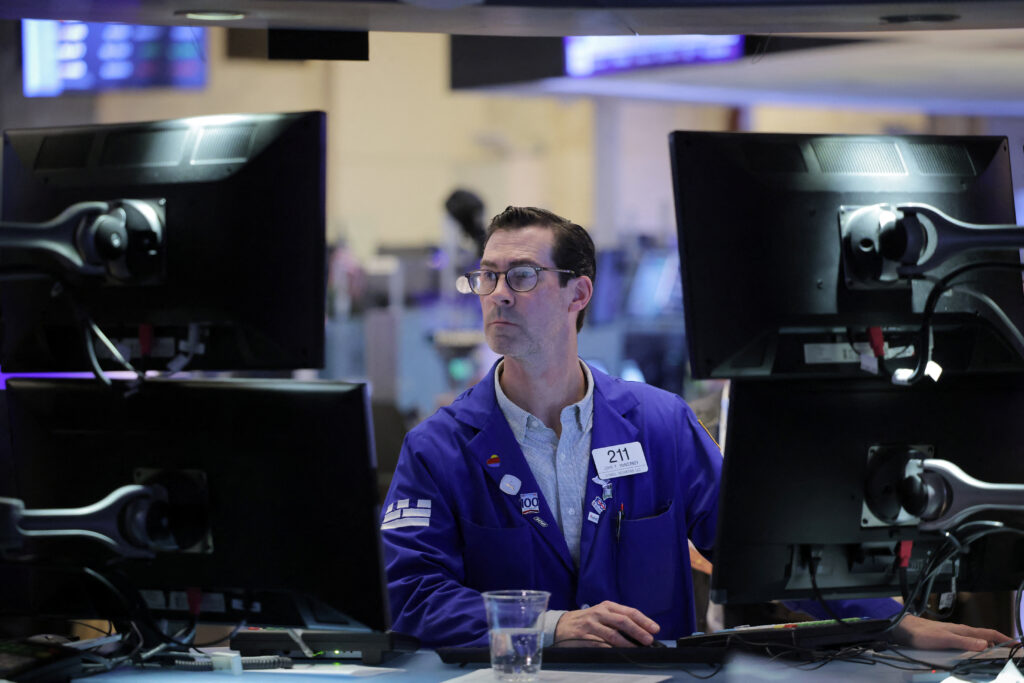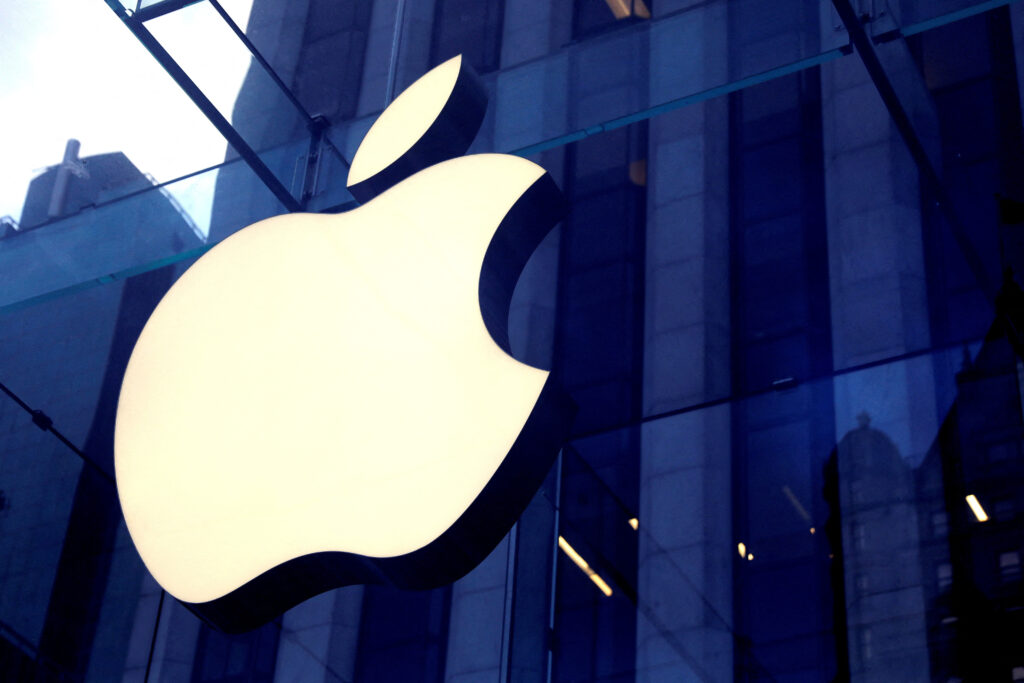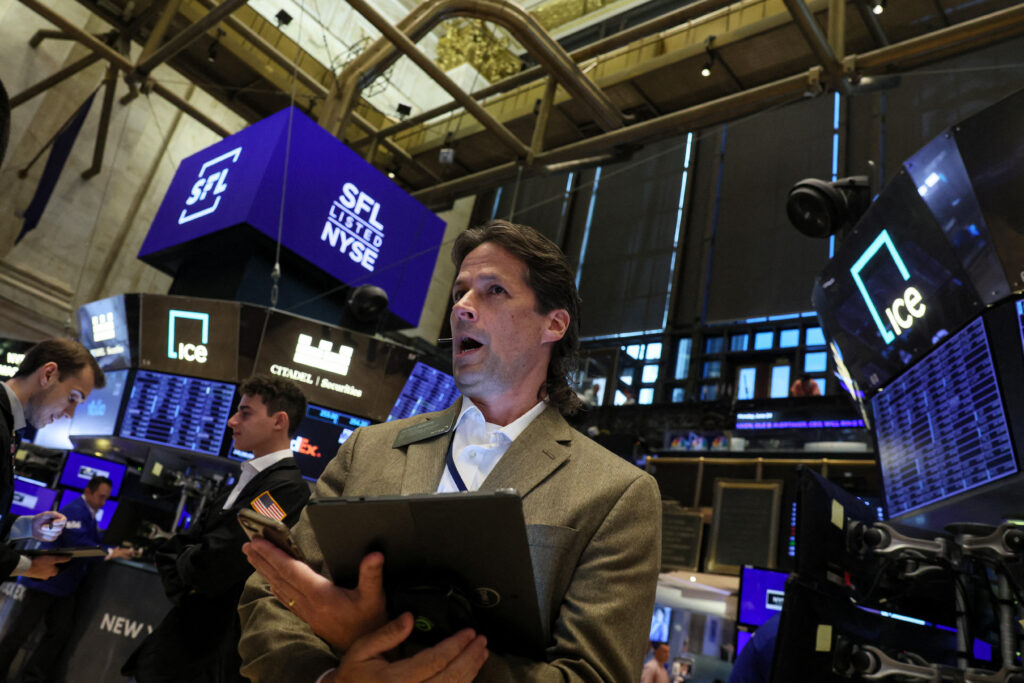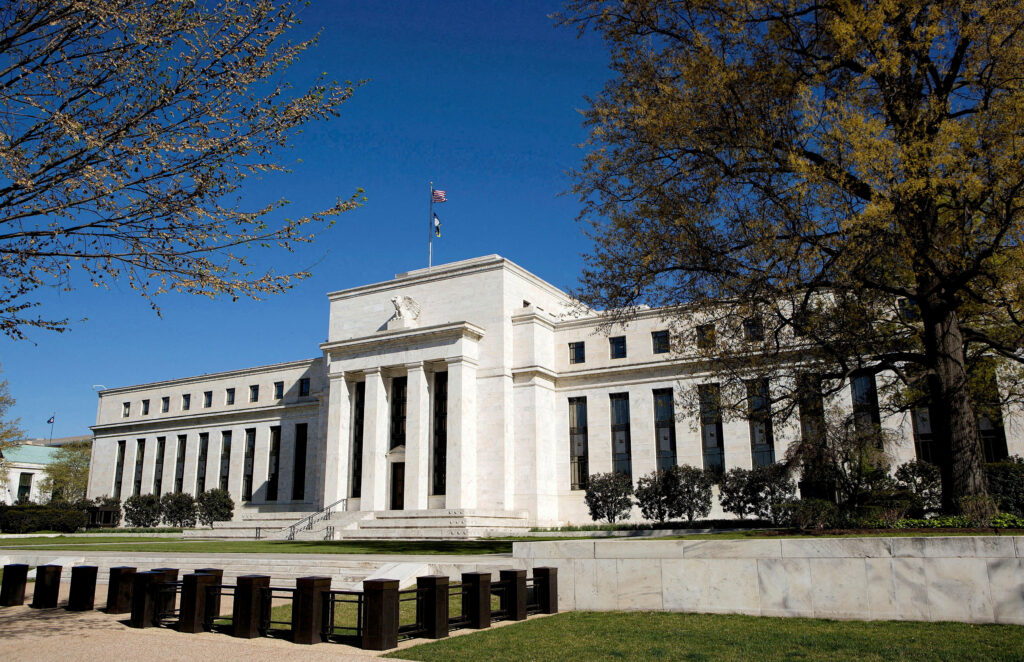Bank stocks may seem complicated to understand!
But how banks function and raise money for themselves is pretty easy to fathom. Bank stocks signal a continuous upside and are a significant long-term investment, but they are not everyone’s cup of tea. They are near the middle of the bar when talking about the risk spectrum. Bank stocks are sensitive to fluctuations in interest rates and can be highly recession-prone. The era of the pandemic had a significant flow on the bank stocks as well. It almost touched the financial crisis of 2008-2009.
The financial sector was one of the worst-performing sectors in the market at the beginning of the pandemic. In 2020, it lost 2% for the entire year, while the S&P 500 saw a 16% increase. The “big four” banks all performed significantly worse. But things are getting better over time, and investing in US bank stocks after thorough research can elevate your portfolio.
This blog has compiled the top US bank stocks you can consider investing in 2024.
Let’s dive in, shall we?
Understanding Bank Stocks
Before we start exploring the advantages and top contenders of investment in the banking sector, we have to understand the workings of the bank stocks in the US.
Bank stocks are shares (or stocks) of financial institutions with the authority and license to receive and hold deposits and can even lend out loans to individuals and organizations.
Although the sector has faced many challenges caused by the recession accompanied by the COVID-19 pandemic, things are looking better. Analysts see a lot of potential in the bank stocks in the coming years.
Here’s a breakdown of the categories of the banking business:
- Commercial Banks: When most people hear the word “bank,” they typically think of commercial banks, which make their money mainly by lending the money they receive from customers as loans. U.S. Bancorp (USB 2.28%) and Wells Fargo (WFC 0.96%) are among the largest commercial banks.
- Investment Banks: Investment banks that specialize in providing financial services to corporations, companies, and governments include Morgan Stanley (MS 2.24%) and Goldman Sachs (GS 4.35%). They also offer advice services, asset management, stock trading, and the facilitation of complex financial transactions. Investment banks also assist businesses with their first public offerings (IPOs).
- Universal Banks: These banks provide services for both investment and commercial banking; consider JPMorgan Chase (JPM 1.39%), Citigroup (C 2.0%), and Bank of America (BAC 2.07%). They provide the benefits of global reach and a variety of revenue streams. They are also more challenging to comprehend and carry the dangers associated with both commercial and investment banking.
Advantages of Investing in US Bank stocks:
If you are considering investing in bank stocks, you need to navigate through the risks and benefits they can impose on your portfolio.
The Great Recession of 2008-2009 adversely affected the banking sector, but as per experts, this sector can serve more excellent investment benefits over the years. Although banks are cyclical and are prone to fluctuating interest rates, there are advantages that attract investors with long-term financial goals.
-
Regulatory Oversight:
Few businesses are subject to more regulations than banking, which became even more evident when the financial crisis of 2008–2009 raised fears of the U.S. banking sector collapsing. Banks must now maintain specific minimum capital requirements. Investment in bank stocks is less risky because larger institutions must be subject to “stress testing” to assess their resilience in challenging circumstances.
-
Edge of investment banking:
There are two kinds of business that banks can do. Banks and commercial banking are typically linked. In addition to requiring deposits and loans, it may entail insurance and retirement planning. Investment banking includes underwriting debt and equity, managing high-net-worth customers’ finances, trading proprietary stocks and bonds, and counseling institutional clients on mergers and initial public offers (IPOs).
From a risk standpoint, the most important thing to understand is that investment banking typically performs better during recessions and turbulence in the markets than commercial banking. The COVID-19 pandemic shutdowns’ peak, the second quarter of 2020, was leading investment bank Goldman Sachs’ (GS 4.35%) second-best revenue quarter.
-
Diversification of portfolio:
Including bank stocks in a diversified investment portfolio can help spread risk across different sectors. Banks operate in various segments, such as retail banking, commercial banking, investment banking, and wealth management. Each of these segments may have different risk profiles and can perform differently under varying economic conditions. For instance, retail banking tends to be more stable, while investment banking can be more volatile.
-
Potential for mergers and acquisitions:
Banks are frequently involved in mergers and acquisitions, which can create value for shareholders through synergies, expanded market presence, and cost efficiencies. M&A activity in the banking sector can lead to increased market share, broader geographic reach, and access to new customer segments or product offerings. Additionally, mergers can help banks achieve economies of scale, reduce costs, and improve operational efficiency. For investors, successful M&A transactions can result in higher stock prices, increased dividends, and enhanced shareholder returns.
-
Resilient in economic conditions:
Banks are integral to the economy’s functioning, acting as intermediaries between savers and borrowers. During economic downturns, banks may face increased loan defaults, declining asset values, and lower demand for banking services. However, many banks have proven resilient during tough times, thanks to factors like diversified revenue streams, risk management practices, and government support.
Risks to consider when investing in the US Bank Stocks
Understanding the underlying dangers when investing in stocks of any nature is essential. Bank stocks have the potential for mergers and acquisitions. They are resilient to economic conditions, but risks are associated with them that you must mitigate for a more stable investment journey.
-
Cyclicality:
Because banks are cyclical enterprises, recessions can affect them. For banks to make money, customers must be willing to borrow and spend money. Fewer people typically use credit cards or purchase homes and cars during recessions. It’s also important to note that banks are far more equipped than before to weather a catastrophic recession. Around the COVID-19 outbreak, JPMorgan Chase (JPM 1.39%) reported conducting its “stress test” with stricter restrictions than the Federal Reserve’s exam.
-
Default Risk:
Financial organizations that lend money may suffer losses if customers and companies cannot repay their loans. Even in prosperous times, banks are always willing to absorb some loan losses. However, loan losses can increase during recessions due to consumers’ and businesses’ inability to repay their obligations.
-
Risk of Interest Rate:
The banking industry can be complicated, with many banks having hundreds of revenue streams affecting their overall performance. But fundamentally, banks only generate revenue by accepting deposits, disbursing loans, and capitalizing on the differential interest rates. Therefore, it should not be shocking that bank profits typically suffer when interest rates decline.
-
Disruption from Fintech:
Disruption is another risk element that is becoming increasingly significant to examine, particularly when examining traditional branch-based bank companies. In recent years, there has been an explosion in the financial technology sector, or fintech, which has put enormous pressure on traditional banks to compete. For instance, internet banks can give consumers lower interest rates and fees on loans and higher rates on savings because they have a more efficient cost structure than branch-based banks.
-
Panic:
Now and again, something happens that may set off a panic over the entire American financial system, or at least a portion of it. Both the 1929 crash that started the Great Depression and the 2008 near-collapse of the banking industry and many other events in between were at least partially caused by bank panics.
An excellent illustration of this is the scenario that failed Silicon Valley Bank, owned by SVB Financial (NASDAQ: SIVB), in 2023. In fact, the bank’s downfall was ultimately caused by problems with risk management unique to the company. However, fear undoubtedly played a significant part since clients withdrew almost $40 billion from the banks the day before regulators took control of them.
Best US Bank stocks to consider investing in
Now that we have a solid understanding of bank stocks, their benefits, and the risks involved- here is a list of bank stocks investors can consider in 2024:
-
Bank of America (BAC):
One of the biggest banks and financial holding firms in the United States, Bank of America provides wealth management, investment, and commercial and consumer banking services. The bank is managing assets worth almost $1.5 trillion.
Bank of America reported a 13% revenue increase to $26.3 billion and 18% profits per share growth in the first quarter of 2023. The bank reported a 7% year-over-year rise in average loan and lease balances, driven by growth in commercial loans and an increase in credit card balances, even in the face of a weakening economy. Furthermore, average deposits decreased by just 3% throughout the quarter, but the bank’s tangible book value per share increased by 9%.
In the first quarter, Bank of America also opened over 130,000 new consumer checking accounts. Bank of America stock forecasts suggest that higher interest rate sensitivity can create opportunities for higher growth potential.
-
Wells Fargo & Co. (WFC):
One of the biggest banks in the United States, Wells Fargo focuses mainly on domestic lending. The corporation’s assets are about $1.9 trillion.
Following a series of operational blunders that resulted in a controversy involving bankers opening millions of false savings and checking accounts for Wells Fargo clients without their permission, the company is undergoing a multiyear reorganization plan. As a punishment for the fraud, the Federal Reserve capped Wells Fargo’s assets in 2018 at over $2 trillion, which is still in effect today.
Despite the cap, Wells Fargo recorded $4.9 billion in net income in the first quarter of 2023, repurchased 86.4 million shares ($4 billion in stock), and increased its Common Equity Tier 1 capital ratio.
-
JP Morgan Chase & Co. (JPM):
JPMorgan Chase, with around $4 trillion in assets under management, is one of the biggest financial services firms in the world. The largest beneficiary of the 2023 banking crisis might be JPMorgan. JPMorgan won an auction to purchase First Republic’s $92 billion in deposits, $173 billion in loans, and $30 billion in securities at the beginning of May 2023. Regulators had seized the First Republic after a significant wave of client withdrawals. JPMorgan paid about $10.6 billion to the Federal Deposit Insurance Corp. for the assets. In addition to offering the potential for revenue and earnings growth, the First Republic acquisition makes it abundantly evident to investors that JPMorgan’s management didn’t care about the bank’s balance sheet or liquidity at the height of the financial crisis.
-
Citigroup (C) :
Citigroup (C) is a diversified global bank offering customers a wide range of financial services worldwide. Here’s an analysis based on the provided information:
- Citigroup faced significant challenges during the 2008 financial crisis and had to undergo partial nationalization to survive. Over the past 15 years, the bank has been restructuring its operations to reduce risk and focus on core businesses. This strategic shift indicates a commitment to stability and long-term viability.
- In the first quarter of 2023, Citigroup completed the sale of its India consumer banking business. Despite this divestment, the company reported a 6% year-over-year revenue growth, excluding the impact of asset divestments. This growth suggests that Citigroup’s remaining businesses are performing well and generating revenue.
- Citigroup’s treasury and trade solutions segment has demonstrated strong growth, indicating success in providing financial services to corporate clients. This strength in the corporate banking segment could contribute to the bank’s overall resilience and profitability.
- With over $3 trillion in assets, UBS is a global investment bank and financial services provider with its headquarters in Switzerland.
-
UBS:
Like JPMorgan, UBS profited from the banking crisis in 2023 by paying $3.2 billion to acquire Credit Suisse, a troubled rival in the Swiss investment banking market. UBS will obtain an anticipated $54 billion in Common Equity Tier 1 capital as part of the Credit Suisse transaction. Additionally, UBS has guided for a 74% increase in its tangible net asset value. Additionally, when UBS integrates Credit Suisse’s portfolio, the Swiss government commits to paying up to $10 billion in losses.
UBS announced a $1 billion net profit for the first quarter of 2023 and stated that it had client inflows in all of its operating regions.
Bottom line,
Warren Buffett loves Bank stocks. I mean, you need not invest in US bank stocks only because a billionaire owns them.
But if you can tolerate short-term volatility and focus on long-term financial goals, you can include bank stocks in your portfolio. So, review the advantages, risks, and list of bank stocks that can fetch you good results and help you make a sound investment decision.
Peter Williams, a financial writer with over five years of experience, specializes in covering stock market movements, bond markets, commodities, and macroeconomic trends.










